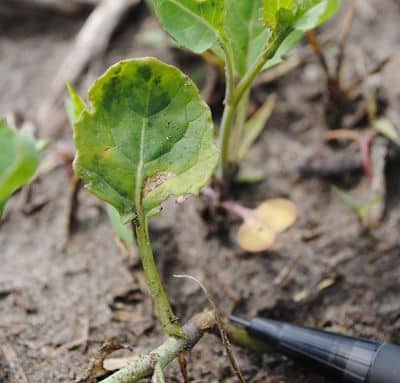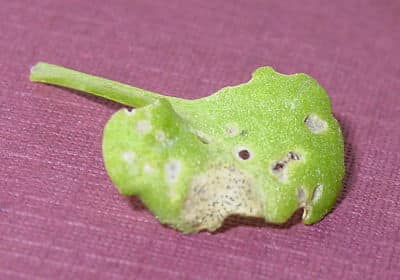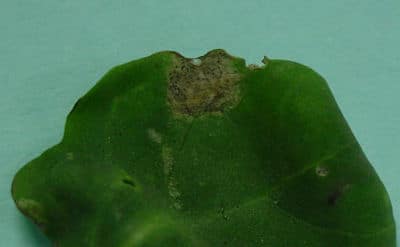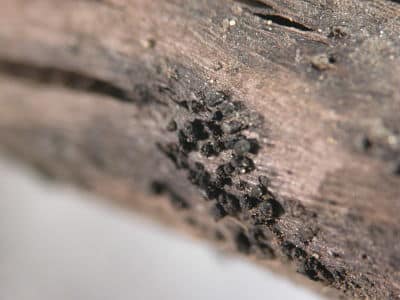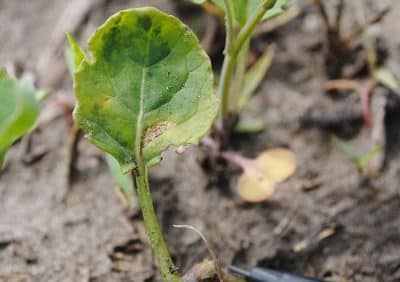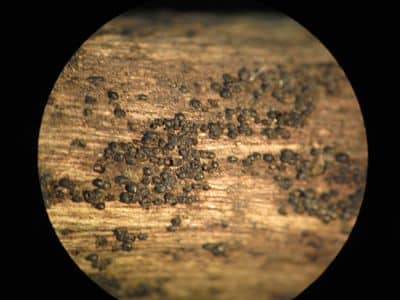Early blackleg infection — from the cotyledon to 3-4 leaf stages — leads to the greatest yield loss. If growers see blackleg lesions on cotyledons or leaves early in the season (see the top photos, below), this may indicate a greater risk of potential blackleg problems.
These tiny lesions may be tricky to spot, and you probably won’t see many of them. When scouting, also look for blackleg pseudothecia (black spots) on old canola residue, which may still be present on fields with a tight rotation. (See the bottom photos, below)
Even if you can’t spot lesions on new plants or old stubble, the field could be at risk of serious blackleg infection. Here are factors that increase the blackleg risk:
—Tight canola rotation
—Using the same variety many times in the rotation
—Yield loss to blackleg in previous years
—Using untreated non-certified seed
—Poor brassica weed control in previous years. These weeds can host blackleg in non-canola years
—Moist soils and warm humid conditions
Using R rated varieties and rotating varieties, especially out of varieties that showed blackleg damage in previous years, can reduce the blackleg risk. But those measures alone may not be enough in areas where blackleg risk is highest.
If the above factors and your crop scouting suggest high risk for blackleg, consider a fungicide as an additional tool to limit infection and yield loss. Check the guide to crop protection for fungicides registered to control blackleg. Click your province for a link to your guide: Alberta Saskatchewan Manitoba. It is always good to leave a check strip and compare yields of treated to untreated areas.
